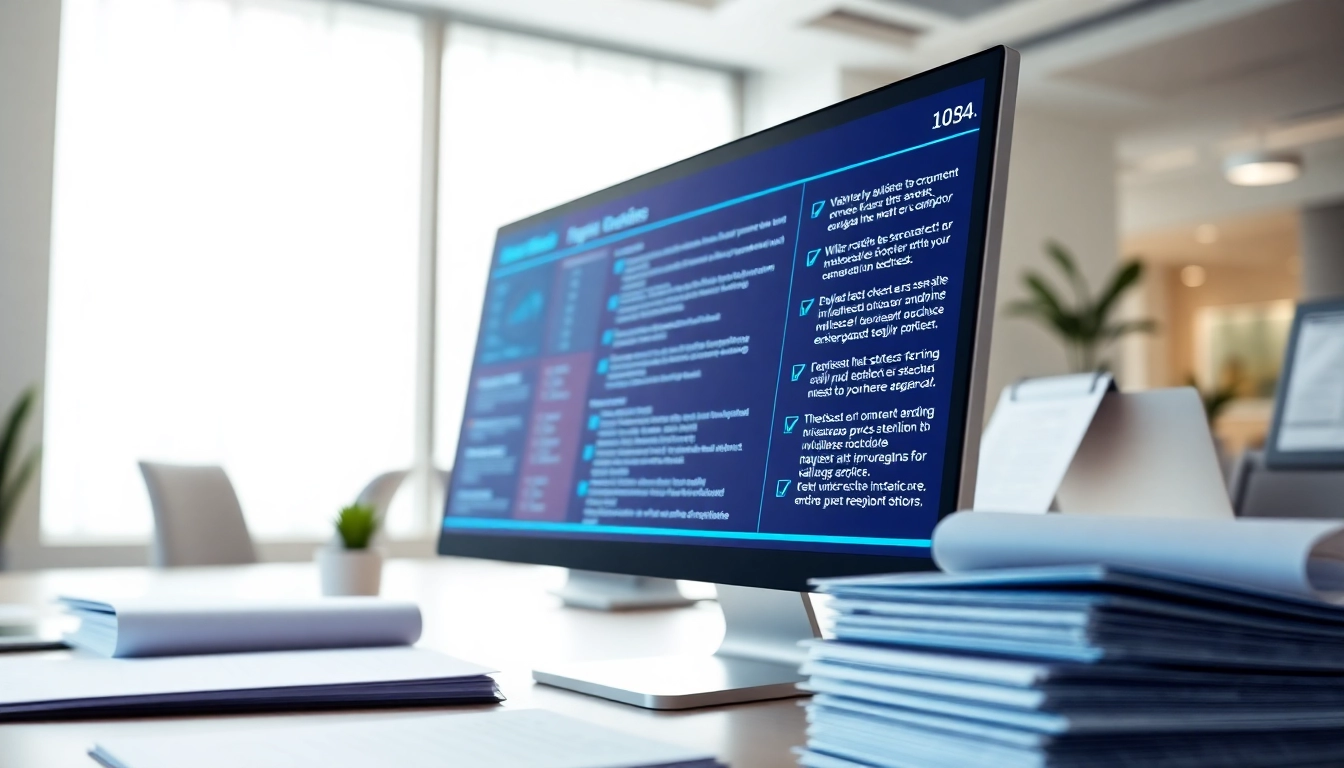Understanding the Importance of a Plagiarism Checker
In the realm of academic writing and content creation, originality is paramount. A plagiarism checker serves as a crucial tool that upholds the integrity of written work. By identifying instances of copied text, these tools allow writers to ensure their work is authentically theirs, promoting fairness and honesty. In this article, we will delve into the necessity of plagiarism checkers, the risks associated with plagiarism, and how to effectively select and utilize a plagiarism checker.
What is a Plagiarism Checker?
A plagiarism checker is a software application that compares written content against a vast database of sources to detect similarities and overlap. The primary purpose of these tools is to ensure that the creation is original, highlighting sections that may be too similar to existing works. This is particularly vital in academic settings, where students are expected to produce original research and analysis.
Why Use a Plagiarism Checker?
Using a plagiarism checker is critical for multiple reasons. Firstly, it helps authors maintain their credibility by ensuring their submissions do not inadvertently include someone else’s work without proper attribution. Secondly, educational institutions often have strict rules against plagiarism, and submitting plagiarized work can lead to severe consequences including failing grades or even expulsion. Lastly, in the professional realm, originality is key to establishing authority and trust with an audience, making the use of a plagiarism checker essential for content creators and marketers.
The Risks of Plagiarism
Plagiarism poses significant risks not only to students but also to professionals. For students, the immediate consequences can be detrimental, leading to academic penalties and a tarnished record. In the professional world, copying content can result in legal consequences, a damaged reputation, and loss of clients. Moreover, from an ethical standpoint, it undermines the value of genuine creativity and intellectual effort. As such, investing time in ensuring work is original and accurately credited is of utmost importance.
How to Choose the Right Plagiarism Checker
Key Features to Look For in a Plagiarism Checker
When selecting a plagiarism checker, it is essential to consider several key features:
- Database Size: A comprehensive database that includes academic journals, articles, and books will provide the most accurate results.
- Real-time Scanning: The ability to scan documents in real-time helps users quickly identify plagiarized sections.
- Customizable Reports: Look for tools that provide detailed reports outlining matches and similarities to improve understanding and resolution of identified issues.
- Multi-format Support: Choose a checker that can handle different file formats (like PDF, DOCX, etc.) to ease the process of checking various types of documents.
- User-friendly Interface: The tool should be easy to navigate, providing an intuitive experience for users of all technical levels.
Comparing Costs and Free Options
While some plagiarism checkers operate on a subscription or one-time payment model, others are available for free. It is crucial to assess the value for money that a paid service provides versus a free version. For instance, free tools might offer only basic functionalities, which could suffice for personal use but may not be adequate for academic or professional necessities. On the other hand, premium services often come with enhanced features, more extensive databases, and better accuracy. Evaluating these options in light of your specific needs will help in making an informed decision.
User Reviews and Testimonials
User feedback can provide insights into the effectiveness and reliability of a plagiarism checker. Before committing to a tool, checking reviews and testimonials can reveal its strengths and weaknesses, as experienced by real users. Consider seeking out independent reviews or community feedback for insights that go beyond marketing claims. Using this information will assist in selecting a plagiarism checker that best matches your requirements.
How to Effectively Use a Plagiarism Checker
Step-by-Step Guide to Using a Plagiarism Checker
Using a plagiarism checker effectively involves several key steps:
- Select a Plagiarism Checker: Based on your needs, choose an appropriate plagiarism checker that aligns with the features and costs discussed earlier.
- Upload Your Document: Most plagiarism checkers allow you to upload documents directly. Ensure you are using a supported file format for seamless integration.
- Run the Check: After your document is uploaded, initiate the scan. This process varies in time based on document length and the checker’s processing capabilities.
- Review the Report: Examine the results, noting which sections of your text are flagged for potential plagiarism. Pay attention to the percentage of similarity reported.
- Edit Accordingly: Make necessary revisions based on the report. Ensure that paraphrased sections are correctly cited or rewritten as required.
- Re-check if Necessary: If significant edits were made, it is advisable to run the document through the plagiarism checker again to confirm originality.
Interpreting Your Results from a Plagiarism Checker
Understanding the report generated by a plagiarism checker is crucial for effective revision. The results typically include:
- Matching Percentages: This percentage indicates how much of the text was matched with existing sources. A high percentage may flag potential issues.
- Source Listings: Review the cited sources that have similar content. This can help you understand where your text overlaps.
- Specific Excerpts: Many tools highlight sections of text that match other sources, allowing for pinpoint revisions.
How to Address Detected Plagiarism
Once plagiarism has been detected, addressing it is key:
- Paraphrase: Rewrite the flagged sections in your own words while maintaining the original meaning.
- Cite Properly: Ensure any verbatim quotes are adequately cited in accordance with the relevant citation style.
- Remove or Alter Content: If it doesn’t add value or originality, consider removing or significantly altering the affected text.
Advanced Features of Plagiarism Checkers
Integrating AI in Modern Plagiarism Checkers
The integration of artificial intelligence in plagiarism checkers has revolutionized the way originality is assessed. AI enhances the accuracy of detection by analyzing context and semantics in addition to matching patterns. This means that even if text has been altered slightly from its original form, sophisticated AI algorithms can still recognize it as plagiarized content. Additionally, AI can improve user experience through personalized recommendations for writing improvement based on detected issues.
Multi-format Support in Plagiarism Checkers
As content creation often occurs in various formats, the ability for a plagiarism checker to support multiple file types is essential. Modern tools can accept not just text files, but also PDFs, Word documents, and more. This versatility allows users to check different types of documents without needing to convert them into a specific format, saving time and effort.
Customizable Reports and Analytics
Advanced plagiarism checkers offer customizable reports that can help users analyze their writing patterns over time. These reports may include analytics on common sources of flagged text, frequency of matches, and suggestions for enhancing originality. By leveraging these detailed insights, users can improve their future writing endeavors and reduce the likelihood of plagiarism.
The Future of Plagiarism Checkers
Trends in Plagiarism Detection Technology
The landscape of plagiarism detection technology is ever-evolving, with trends indicating a shift toward even more sophisticated analysis tools. The use of machine learning continues to grow, allowing tools to adapt and improve their detection accuracy over time. Furthermore, the rise of collaboration tools has led to the necessity for features that facilitate group checks, ensuring that collaborative projects maintain originality standards.
Ethical Considerations in Plagiarism Checking
As plagiarism checkers become more ubiquitous, ethical considerations arise around their use. Issues of privacy and data security are paramount, particularly in academic settings where sensitive content may be uploaded. Users must ensure they select checkers that prioritize data protection and transparency in their operations. Moreover, the ethical implications of labeling content as plagiarized must be carefully managed to avoid undue penalties on honest, albeit poorly cited, efforts.
What Users Can Expect in the Coming Years
Looking forward, users can expect plagiarism checkers to become more integrated with other writing and research tools, creating an ecosystem of support for writers. Enhanced natural language processing capabilities will continue to refine detection algorithms, allowing for even more robust originality assessments. As demands for academic integrity, professional security, and creative authenticity increase, plagiarism checkers will play an increasingly critical role in upholding these standards.



















